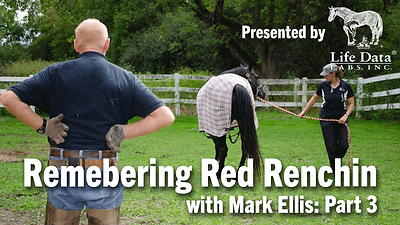The December 2010 E-mail Survey regarding hoof coatings continues to draw responses from farriers. In the survey, we asked farriers what kinds of hoof coatings, if any, they use and what the benefits are. We also inquired if they charge extra for applying hoof coatings or sell the products to horse owners. Below are additional comments from that survey.
A: I do not use or sell hoof coatings, but I do believe they’re useful when a horse has sand cracks. Clean up the hoof and coat it so the mud doesn’t make the cracks bigger. I use Mane ‘N Tails’ Hoofmaker when the hooves are really dry and Absorbine’s Hooflex when wet to try to keep the moisture out.
— Mona Smith, Sanbornton, N.H.
A: I use a variety of products like Tuff Stuff, Keratex’s Hoof Shield and products that I formulate. Hoof coatings help seal the hoof and add to the cosmetics of the work — presentation is 90% of the sale.
I do not charge extra for hoof coatings. My charge is based on the average price
of shoes and nails. This allows me to do what I deem necessary and price is not in the thought process.
— John Corkery, Lisle, Ill.
A: I use a lacquer coating that I mix myself to finish the job nicely. I don’t charge extra for it or sell it.
— Jack Millman, Worthington, Mass.
A: I use and recommend hoof oil to all my clients. I apply it to every horse that has been shod and do not charge extra for the service.
Hoof dressings can be tricky and there are some facts that most people do not know. For example, petroleum actually harms the hoof wall after a few months. Just like petroleum in lip balms, the more you apply it, the drier your lips become. You want a hoof dressing that the hoof wall absorbs, not one that just lies on top. Tar and petroleum products trap too much moisture and harmful bacteria against the hoof wall. This can cause more problems down the road.
I only use Herbal Hoof Oil, which can be found at tlcequineproducts.com. It’s made with natural oils, herbs, pure lavender and tea tree oils. I’ve used it to help with dry, brittle feet and also to help combat hoof rot. I sell it out of my truck to my clients.
— Nate Crawford, Leechburg, Pa.
A: Most of the time I use whatever the customer has on hand. If the customer isn’t using any, I won’t either.
Hoof coatings are a good attempt to control the amount of moisture in the hoof, but are probably better for the person applying it then they are for the horse.
— Jon Urich, Runnells, Iowa
A: I mostly shoe backyard horses or those at small barns. I use Molentium Hoof Dressing and Tuff Stuff. I don’t charge extra and I use it as needed, so not all of the horses are treated.
— David V. Crockett, Stevensville, Md.
A: I use my own mixture of pine tar and Fiebing’s Neatsfoot oil. This mixture keeps the hoof pliable.
— Marie Alliet, Thamesville, Ontario
A: In rainy seasons I use hoof sealants like Delta Mustad’s Tuff Stuff or something similar. Sealants are good because they protect the hoof against moisture and seal nail holes.
One thing I don’t put on hooves is oil or grease. Once when I had finished shoeing a horse, I saw the owner smearing grease on its hooves. I asked to see the can she was holding and, since the light was bad, we had to go out so I could read it. Once outside, I threw the can as far as I could. The owner asked why and I told her I just wanted to save the horse from a lot of trouble. The smarter readers can now figure out what I think about oil and grease.
I don’t charge extra if I use a sealant. The way I look and sometimes behave, I just have to do them little favors every now and then. I could make extra money selling hoof coatings, but I’m just too lazy to do it. Besides, I’ve been poor for 62 years and wouldn’t know what to do with all that money.
— Kari Salonius, Vantaa, Finland
A: I use Tuff Stuff to improve the hooves’ appearance for my clients. I don’t charge extra and only use it on shod horses.
— Cody Bogard, Elwood, Ind.
A: Sound Hoof helps prevent moisture loss while guarding against excessive moisture absorption. I don’t charge extra or sell it to customers.
— Jim Stralser, Enumclaw, Wash.
A: I use Tuff Stuff, which I mix 50/50 with PVC cement and acetone. This seems to keep out unwanted moisture. I do not charge for it nor do I sell it.
— Glace Rider, Warriers Mark, Pa.
A: I use Crossapol Hoof Hardener and natural oils, but I’m not sure if they make a difference.
— Ria Kotze, Round Hill, Va.
A: I use Keratex hoof gel because it replaces the periople that is removed during trimming.
I don’t charge extra for applying a hoof coating and rarely, if ever, sell it. Hoof coatings need to be applied every day to be beneficial. Client compliance would be a big challenge. I doubt that my clients would get it applied even three times in a week.
— Travis Kuhlka, New Salem, N.D.
A: I’m a Thoroughbred trainer and have improved many hooves with my own hoof dressing — Kaz Equine’s Hoof Dressing. It’s an all-natural formula that helps maintain the hoof’s natural moisture balance.
— Joseph Kasmerski, Columbia Station, Ohio







Post a comment
Report Abusive Comment